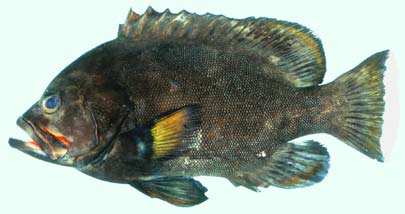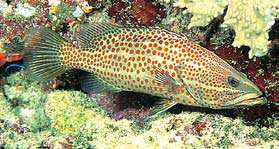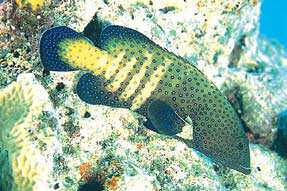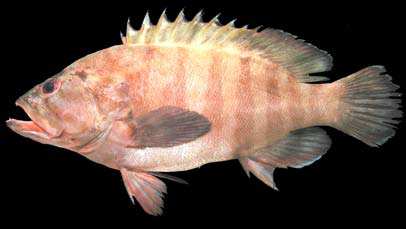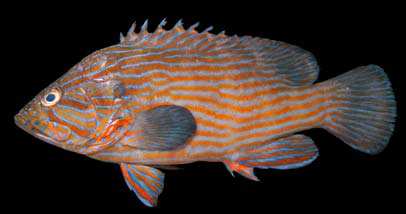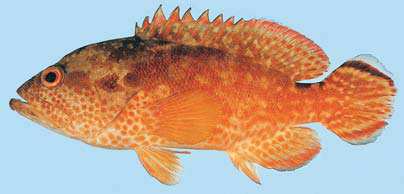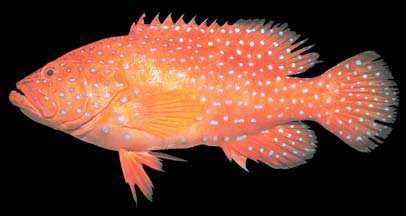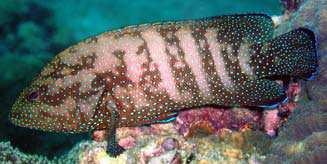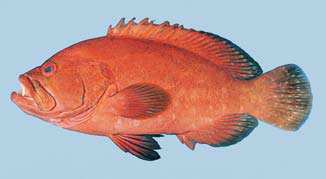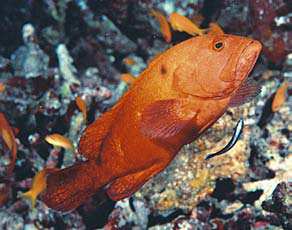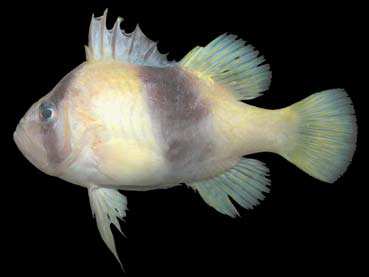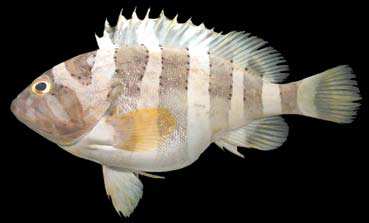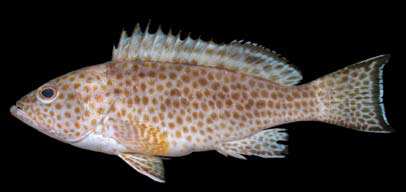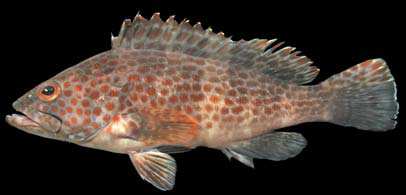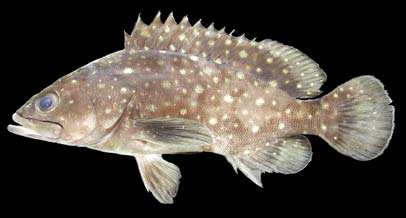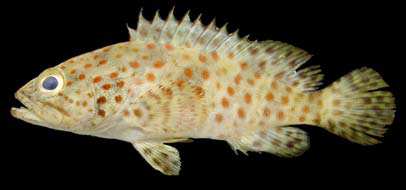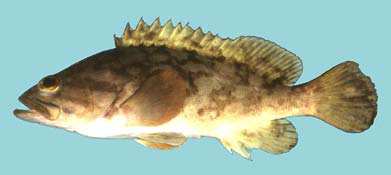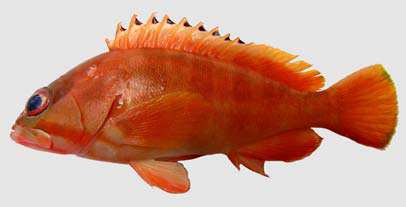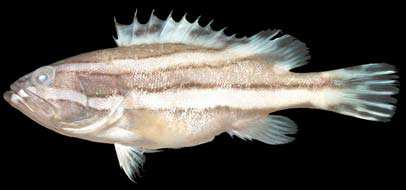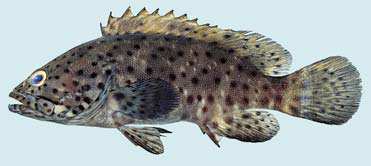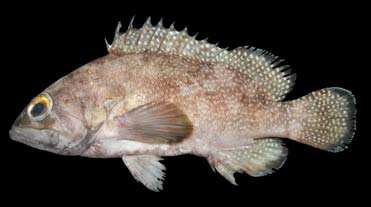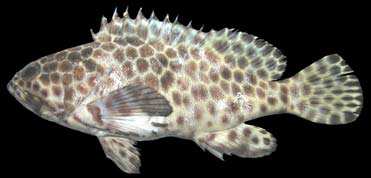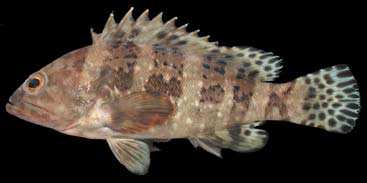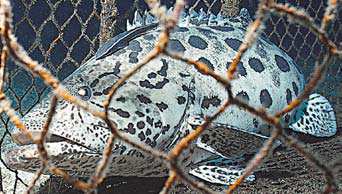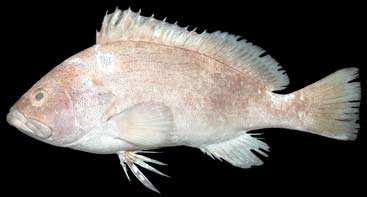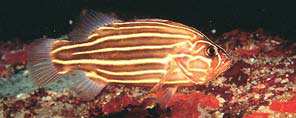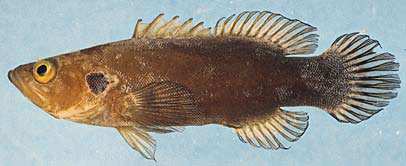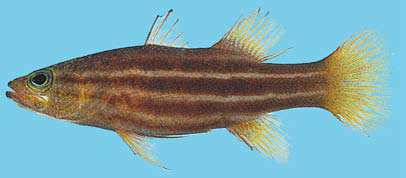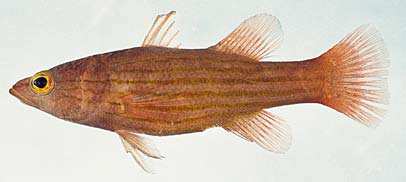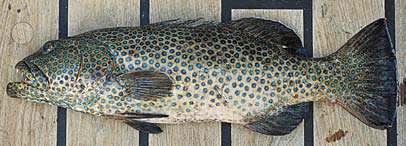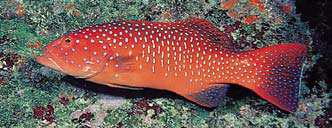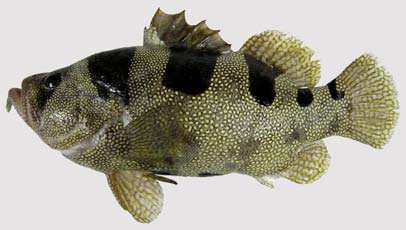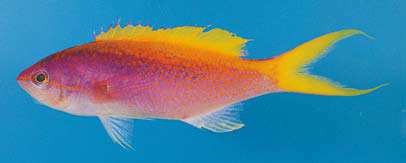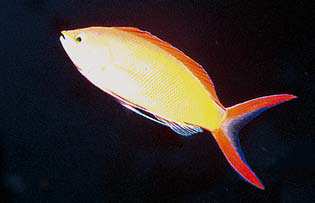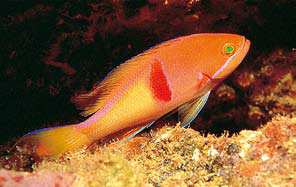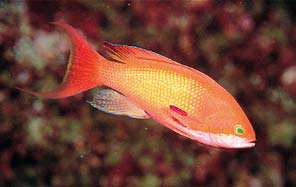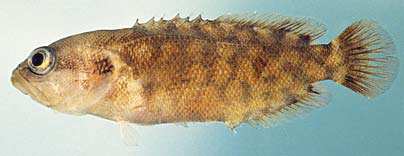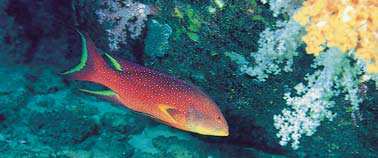SERRANIDAE
Groupers (Sea Basses, Fairy Basslets)
By Hiroyuki Motomura and Ukkrit Satapoomin
|
Body variable in shape, from deep-bodied to elongate and little compressed to notably compressed. Opercle bearing 3 flat spines; posterior margin of preopercle nearly always serrate or with 1-4 spines. Mouth large, terminal; maxilla exposed when mouth closed; lower jaw usually projecting; bands of small, slender teeth in jaws; canines usually present at front of jaw and sometimes at side; small teeth present on vomer and palatines of most species; no molar or incisiform teeth. Opercular membrane separate, with 7 branchiostegal rays. Dorsal fin single or may be notched, with IV-XIII spines and 9-25 soft rays; anal fin with III (rarely II) spines and 6-24 soft rays; caudal fin rounded to lunate in shape with 12-15 branched rays; pelvic fins with I spine and 5 soft rays, no scaly axillary pelvic process. Scales small to moderate, adherent, ctenoid (or secondarily cycloid). A single complete lateral line, extending on caudal fin less than 1/2 length of middle caudal fin rays. Color: variable with patterns of light or dark stripes, spots, vertical or diagonal bars, or nearly plain. Similar families occurring in the area. Centropomidae: head depressed anteriorly; pectoral fins shorter than pelvic fins; lateral line extends to rear margin of caudal fin; opercle with a single flat spine. Lutjanidae: maxilla mostly covered by preorbital bones when mouth closed; no spines on opercle; scaly axillary process at base of pelvic fins usually well developed. Haemulidae: maxilla mostly covered by preorbital bone when mouth is closed; no teeth on vomer or palatines; no spines on opercle. Sparidae: jaws with incisiform and/or molariform teeth; maxilla mostly covered by preorbital bone when mouth closed; no spines on opercle; edge of preopercle smooth. Lobotidae: no spines on opercle; no teeth on vomer or palatines; soft dorsal and anal fins project well past caudal fin base. Kuhliidae: rear edge of opercle froming only 2 flat points; branchiostegal rays 6; scaly sheath at bases of dorsal and anal fins. Acropomatidae: rear edge of opercle forming 2 flat points, or the lowest point developed as a cluster of sharp spines; dorsal fin deeply notched or as 2 separate spiny and soft rayed fins, the first part with VII-X spines, the second with I spine and 9-10 soft rays; several distinct, spaced canines along lower jaw. Remarks. Benthic or bottom-orientated fishes, usually found on coral reefs or rocky substrata; most species occur on continental or insular shelves in depths less than 200 m. All are predaceous, the larger species feeding mainly on fishes, crustaceans, and cephalopods, while the smaller ones feed on zooplankton. Most species are protogynous hermaphrodites. |

|
|
